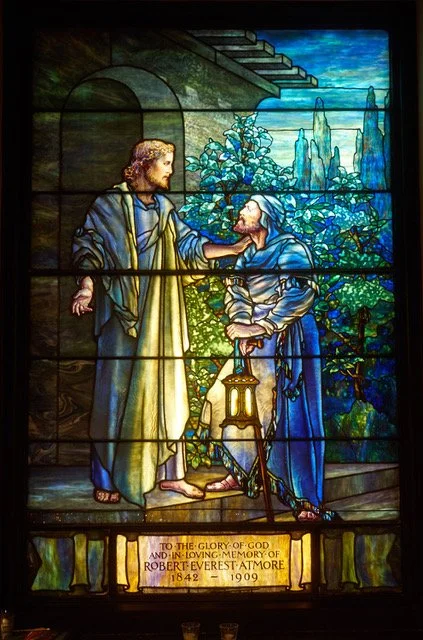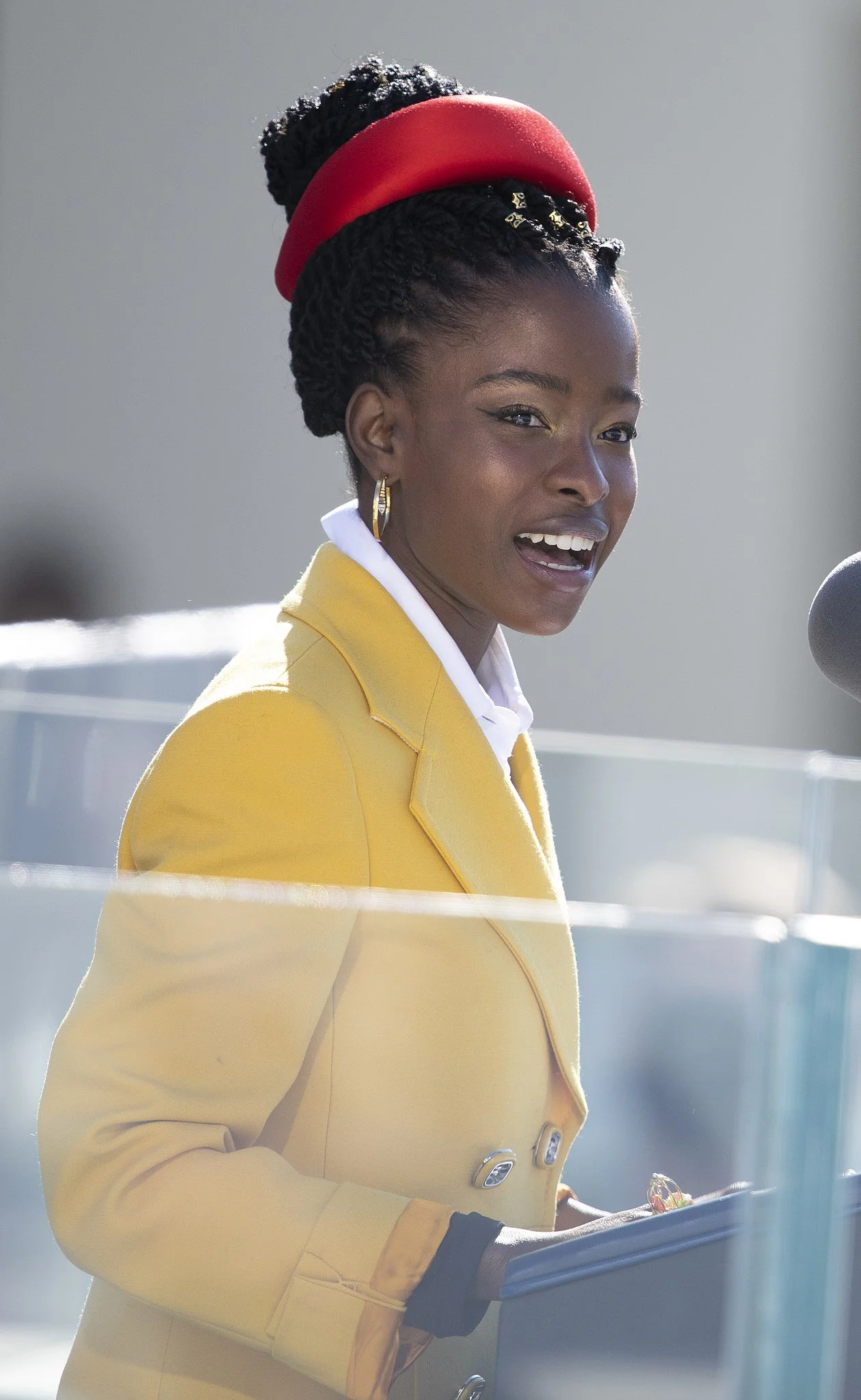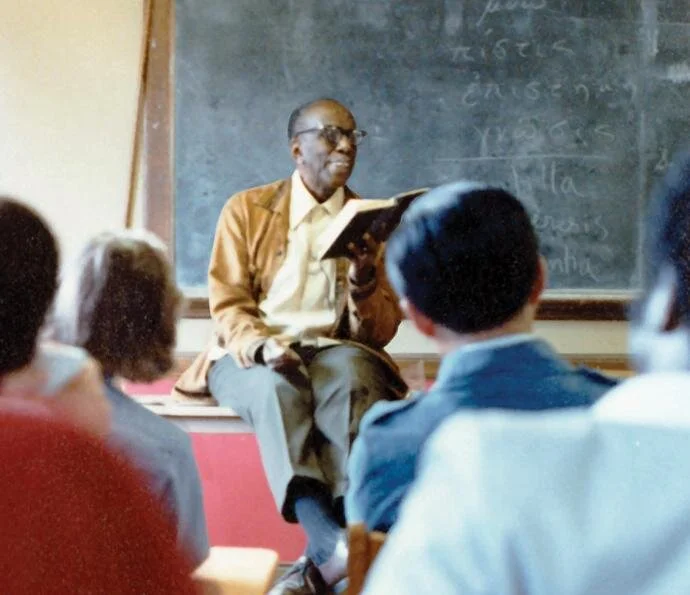Friday Reflection Part II: An Unlikely Pair Committed to Children’s Religious Education
This week’s 2-part Friday Reflection offers portraits of two significant figures in the Episcopal Church
Part I: Adelaide Teague Case (1887-1948) is revered as perhaps the foremost academic in the study and practice of religious education in the Episcopal Church and the first woman appointed to the faculty of an Episcopal or Anglican seminary.
Part II: Eliza Howard Sims Burd (1791-1860) who, with her husband, was one of the important founders of Saint Stephen’s and an early proponent of religious education for children and commissioned two dramatic monuments in the sanctuary that celebrate children’s path to Christ through education.
Margaret and Elizabeth Burd, early 1840s
Reading about Adelaide Teague Case brought to mind, almost perversely, a very different woman at St. Stephen’s nearly a century before, Eliza Howard Sims Burd (1793-1860). Broadly, they are similar: Both were American women born to privilege; both adhered to “high” or Anglo-Catholic Episcopalianism; and both were prominent advocates for much debated views about children’s religious education. Though Dr. Case’s impact reached far, her campaigns took place, I gather, mainly in scholarly arenas and related public media, and publications. Mrs. Burd operated from her home through her church, whence her controversial views traveled far, thanks to the fame of their medium: a much-publicized funerary monument and baptismal font within the church.
Mrs. Burd’s vision for children’s religious education went public at the death in 1848 of her husband, Edward Shippen Burd, a founder and regular vestryman at St. Stephen’s, in a memorial requested in his will. He specified a marble sculptural monument to their three children who died as adolescents and young adults: Woodrup (d. 1837 at 15), Margaret (d. 1844 at 25), and Elizabeth (d. 1845 at 29).
Carl Steinhäuser, Burd Children’s Memorial, 1852
Five sons had already died within months of birth, between 1811 and 1827. Their parents were devastated by losing all eight children, an exceptional mortality rate for one family, regardless of class, even for the nineteenth century. Many biographies claim their deaths hastened their aged father’s.
Mr. Burd wished the memorial to honor the children’s virtues and exemplary religious character and, if approved by the rector and vestry, placed within the church where they worshipped. Mrs. Burd’s spokesmen (her lawyers) justified this unprecedented monument within the intimate urban church as a significant public contribution: It would be a cultural asset for the city and impressive source of religious instruction for all. Mrs. Burd emphasized the monument’s educational role within the church by refusing all suggestions that she and her late husband be portrayed as well.
Steinhäuser Burd Children’s Memorial seen from inside the church
The result, as proposed by its maker Carl Steinhäuser, a German sculptor in Rome, was a unique monumental group. The three idealized siblings appear interwoven (signifying their virtuous loving bond) as they listened to readings from the Bible or Book of Psalters (faith) and fell asleep (death) until approached by the Angel of the Resurrection who awakens them by a slight touch for their ascent to heaven. Any dynastic or biographical reading of the monument (conveyed only in subtle inscriptions) disappeared with the setting proposed by the sculptor and architect.
The marble became the centerpiece of a new, spare, dedicated annex designed by prominent high-church architect Richard Upjohn, connected to St. Stephen’s interior by a grill gate in the church’s north wall and placed over a new family vault in the adjacent churchyard. With natural light washing over the freestanding group from an overhead skylight (since painted over), this otherworldly apparition of the children’s resurrection, then visible only from the church interior through the gate, provided an eloquent lesson about the reward for the young faithful whose lives were cut short.
Once installed in its completed space in 1853, this dramatic sculpture drew crowds, photographers, and press. Most everyone understood the (literally) touching critical moment of the children’s resurrection through the riveting angel with enormous spread wings, trumpet, and gently outstretched right hand. Thanks to the angel, the group was quickly dubbed “The Angel of the Resurrection.”
Many, however, also knew how explosive doctrinally this subject was within the Episcopal church. Through the monument, St. Stephen’s publicly affirmed that heaven was open to children who had received religious training and the sacraments, beginning with baptism—even as infants. Perhaps to accentuate youth, Steinhäuser rendered the Burd siblings as much younger than actuality, especially Woodrup (lower right), who looks well under 15. Mrs. Burd emphasized the importance of baptism with her 1859 gift of Steinhäuser’s monumental marble baptismal font that celebrates the Good News of salvation with baptism. It loomed prominently in the central aisle at the chancel until 1878.
Together, Mrs. Burd and the church dramatically presented a contested doctrinal statement within the interior. By 1860, the congregation still adhered to the founders’ high-church principles. They justified infant baptism through Christ’s affirmation to his apostles that the kingdom of God belongs to such as these [children] (Mark 10:13-16). The sacrament of baptism thus placed the infant on the path of the Christian faithful, led by parents, sponsors, and church, to full commitment with confirmation when of age. The opposing Evangelical camp within the Episcopal church felt that only a committed believer (an educated, self-aware adult) should be baptized. Debate within the Episcopal church on this point raged throughout the nineteenth century. But it mounted with Evangelical hostility to the Oxford (Tractarian) movement especially as these monuments were planned after 1848. The arresting Burd Children’s Memorial, which asserts the piety of these youths through their education at the church and their own virtue as their credentials for Christ’s promised entry in the afterlife, would have been a lightning rod for doctrinal tension.
We don’t know St. Stephen’s approach to religious education in its Sunday schools in these early years. Biblical criticism was under especially rapid growth and vigorous debate then; St. Stephen’s later rectors and the congregations that called them embraced such thought and its applications to church activities.
So how might Mrs. Burd and Dr. Case, high-church women committed to their faith and religious education for children, engage with one other? Consider the stunning personal differences. In one chair, we have Mrs. Burd, genuinely and openly religious, generous church patron, hostess extraordinaire for her own set (according to social chronicler Sidney George Fisher) until she retreated into seclusion at her husband’s death. Her notes to the church reveal she was articulate, capable of strong emotion, firm views, and commanding authority. Her openness to personally helping the needy was focused: She accepted only white, legitimate, Episcopal orphans (preferably daughters of departed clergy) into her first school nearby and occasionally into her home. She was a definite force, channeled perhaps by a particular milieu and time. In the other chair, we have Dr. Case, who took into her home families of many faiths and backgrounds, treating all with grace and compassion. Their shared upbringing might provide the mechanisms of courtesy for conversation. Could they transcend their different historical circumstances for fruitful dialogue, listening, exploring common ground and difference?
It’s an important challenge for us all in these fractious years even without a century’s distance.
—Suzanne Glover Lindsay, St. Stephen’s historian and curator










